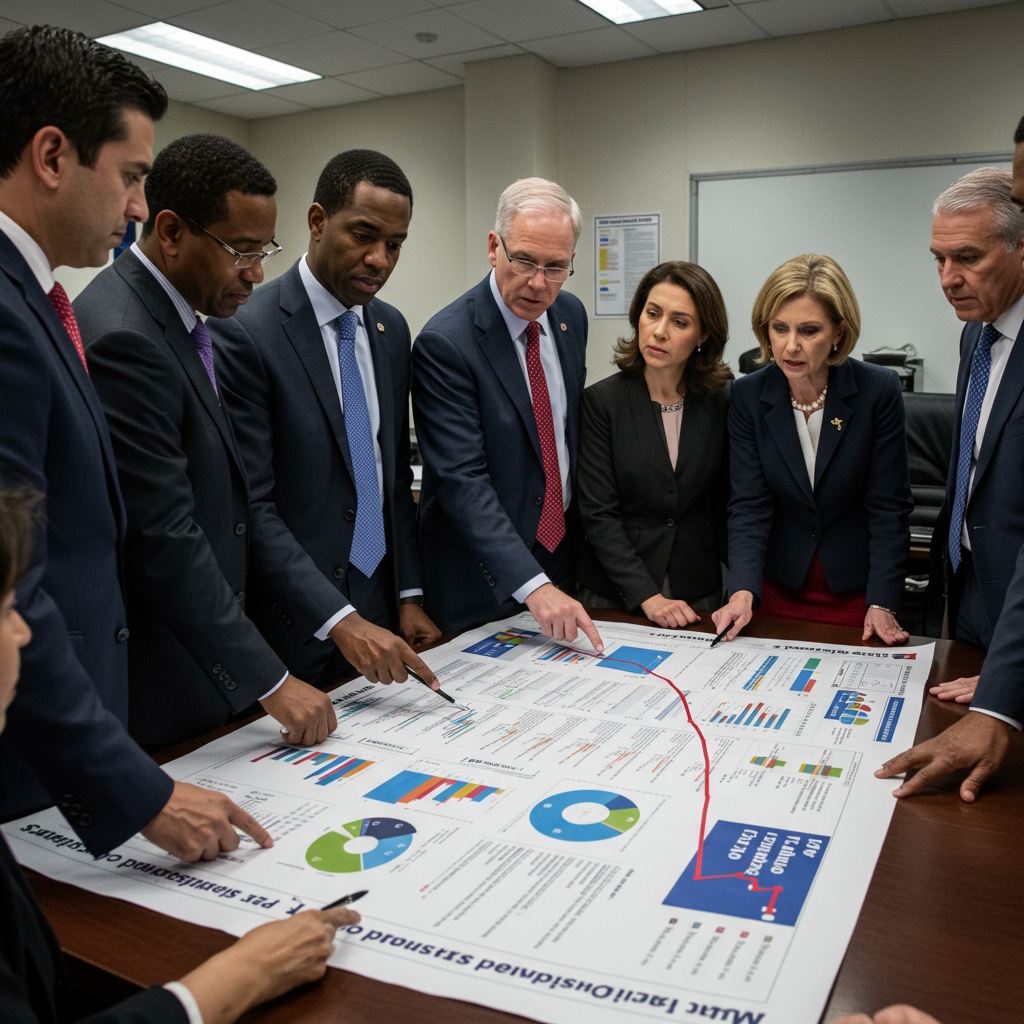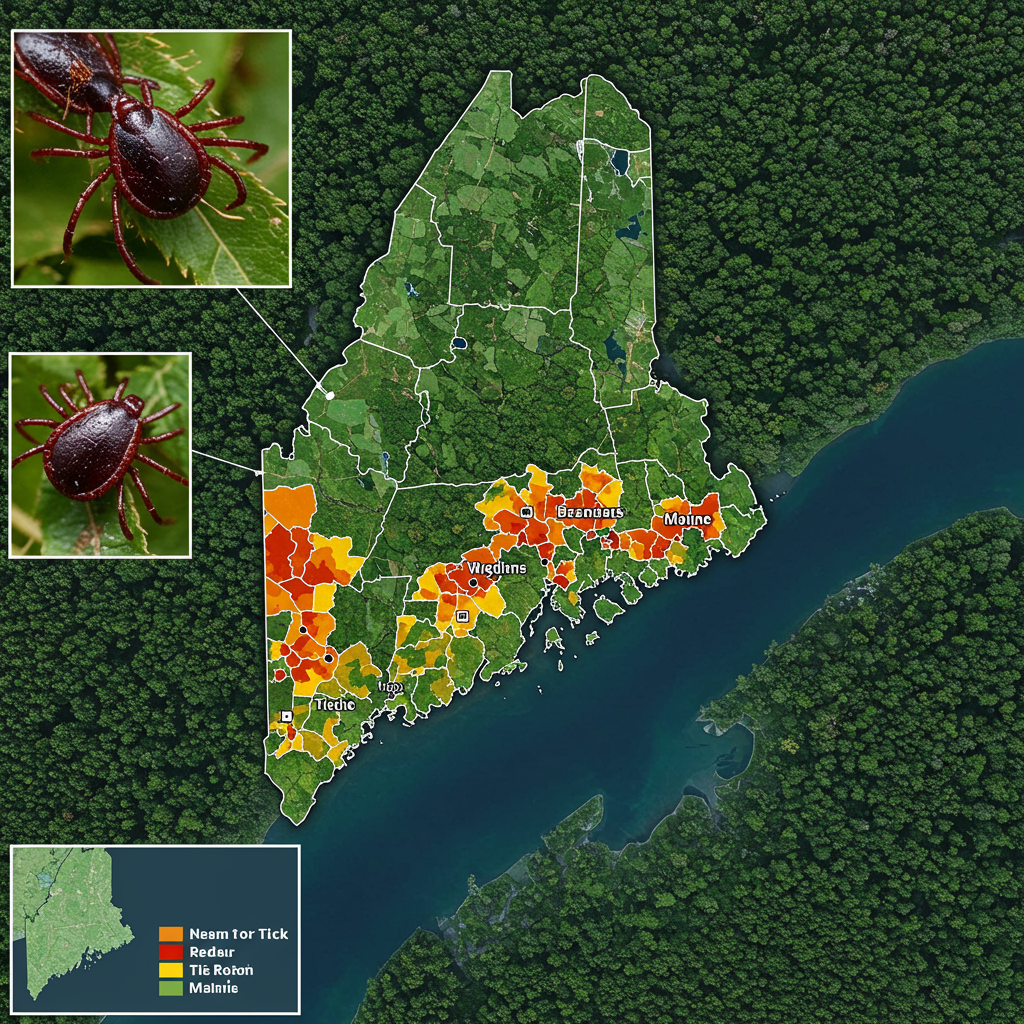The United States faces a troubling public health milestone in 2025. measles cases have surged to the highest level recorded since the disease was declared eliminated within the nation a quarter-century ago. This resurgence is primarily linked to declining childhood vaccination rates and persistent outbreaks in communities with low immunity, according to health officials and data from leading health centers. The stark reality is that this easily preventable illness is making a dangerous comeback, threatening decades of public health progress.
As of midway through the year, preliminary data indicates at least 1,277 confirmed measles cases have been reported across the US. This total already surpasses the previous modern-day record of 1,274 cases seen throughout all of 2019. Experts caution that the actual number of infections is likely higher due to underreporting. Tragically, three people have died from measles this year – two unvaccinated children in Texas and one unvaccinated adult in New Mexico – equaling the total number of US measles deaths reported over the previous two and a half decades combined.
The Record Surge Explained
The rapid rise in measles cases in 2025 represents a significant escalation compared to recent years. Since measles was declared eliminated in the US in 2000, the country had averaged around 180 cases annually. The 2019 surge was a notable exception, fueled by large outbreaks primarily in unvaccinated pockets in New York. However, the current situation in 2025 has exceeded that peak well before the year’s end. This indicates a potentially broader or more intense spread. The vast majority of recent cases are occurring in individuals who have not received the recommended MMR vaccine. Only a small percentage of confirmed cases have been in people who received one or two doses.
Measles is one of the most contagious diseases known. It spreads easily through the air when an infected person coughs or sneezes. The virus can live for up to two hours in an airspace after an infected person leaves the area. Symptoms typically include fever, cough, runny nose, red eyes, followed by a rash. Complications can be severe, including pneumonia, encephalitis (brain swelling), and death.
Understanding the Measles Elimination Status
Measles was officially declared eliminated in the US in 2000. This doesn’t mean the disease vanished entirely from the country. Elimination status means there is no continuous transmission of the virus for more than a year. This was a historic achievement for US public health, made possible largely by high vaccination rates following the widespread availability of the measles-mumps-rubella (MMR) vaccine in the 1970s. Maintaining elimination status relies on sufficient population immunity, known as herd immunity. When vaccination rates fall below the necessary threshold – generally around 95% for measles – the virus can gain a foothold and spread continuously. The current surge, particularly the large outbreak in West Texas, poses a direct threat to this status. If continuous transmission linked to that outbreak extends through January 2026, the US could officially lose its measles elimination designation.
Why Are Cases Rising?
The primary driver behind the alarming increase is declining childhood vaccination coverage. The US Department of Health and Human Services aims for 95% of kindergartners to receive two doses of the MMR vaccine. For four consecutive years, the US has fallen short of this crucial threshold. Worryingly, a record share of US kindergartners had vaccine exemptions in the 2023-24 school year. This left over 125,000 young children unprotected against measles and other vaccine-preventable diseases.
Low vaccination rates create pockets of vulnerability where outbreaks can ignite and spread rapidly. These unvaccinated communities allow the highly contagious virus to circulate easily, making it difficult to control. The decline in coverage is attributed to various factors, including vaccine hesitancy, access issues, and the proliferation of anti-vaccine disinformation targeting specific communities.
The Major Outbreaks Fueling the Crisis
The most significant outbreak driving the national case count is centered in West Texas. This single outbreak, which began in late January, accounts for more than 750 confirmed cases alone. A major hotspot within this outbreak is Gaines County, Texas. Health department data shows over 400 cases there since the start of the year. Vaccination rates in Gaines County are notably below recommended levels. In the 2024-25 school year, nearly 1 in 4 kindergartners in the county lacked their required MMR vaccine dose, one of the worst rates in the state.
The West Texas outbreak has not remained isolated. Dozens of cases in neighboring New Mexico and Oklahoma have been linked to the same spread. Cases reported in Kansas may also be connected. Beyond this major focus, at least 27 distinct outbreaks (defined as three or more related cases) have been reported across the country this year. At least 38 states have reported at least one measles case. This indicates that while one large outbreak dominates the numbers, smaller clusters and travel-related introductions are widespread. For example, a single infectious traveler in Colorado last month led to cases on a plane, in an airport, and subsequent community spread.
Global Context: A Wider Regional Threat
The measles surge in the US is not happening in isolation. Neighboring countries Canada and Mexico are also experiencing significant increases. The Pan American Health Organization (PAHO) reported a dramatic 29-fold rise in measles cases across the Americas region compared to the same period last year. Canada has confirmed over 3,170 cases this year, including one death, the highest number since its elimination in 1998. Mexico has recorded over 2,590 cases with nine deaths, primarily in Chihuahua state. These regional outbreaks, sometimes fueled by spread within undervaccinated communities like some Mennonite populations, increase the risk of imported cases into the US, further challenging containment efforts. In April, Mexico even issued a travel warning for its citizens visiting the US and Canada due to the high measles rates.
Vaccination: The Critical Defense
The MMR vaccine remains the most effective tool against measles. One dose provides about 93% protection against measles infection, while two doses boost effectiveness to approximately 97%. The Centers for Disease Control and Prevention (CDC) recommends the first dose at age 1 year and the second dose between ages 4 and 6 years.
In response to the surge, some affected areas have adapted guidance. They are recommending early vaccination for infants as young as 6 months in high-risk areas or during outbreaks. Data from Texas and New Mexico show positive responses to these efforts, with increased MMR vaccination rates reported, including among infants receiving their first dose early. A recent analysis showed early MMR vaccination rates among 6-month-olds in Texas this year are more than eight times higher than in 2019.
Despite these positive vaccination efforts in specific areas, the overall national trend of falling childhood vaccination rates is concerning. Achieving and maintaining high vaccination coverage (around 95%) is essential to create strong herd immunity. This protects not only vaccinated individuals but also those who cannot be vaccinated due to age (infants under 6 months) or medical conditions.
Responding to the Outbreaks
Public health officials are working to contain outbreaks through various measures. These include identifying and notifying people exposed to measles, isolating infected individuals, and offering vaccination to contacts. Special vaccination clinics have been set up in affected areas to boost immunity levels. Some counties have expanded vaccination guidance to allow earlier doses for infants at increased risk. Health agencies at local, state, and federal levels are also issuing warnings and guidance for the public and healthcare providers. The CDC has notably stepped up its guidance for travelers, strongly advising that anyone traveling internationally be fully vaccinated with two doses of the MMR vaccine. This underscores the global interconnectedness of outbreaks.
The political landscape surrounding vaccine policy has also drawn attention. Unlike in 2019, when federal health leaders issued clear statements supporting vaccination, the current situation involves complexities at the highest levels of health leadership, including past statements by a current HHS official regarding vaccine safety that diverge from public health consensus. Public health organizations like the American Medical Association have voiced concerns that actions impacting federal vaccine advisory panels could undermine routine childhood vaccination efforts and fuel the spread of preventable diseases.
The current measles crisis serves as a critical reminder of the fragility of disease elimination status. Maintaining high vaccination coverage isn’t just a recommendation; it’s a necessity for protecting public health and preventing outbreaks of highly contagious diseases like measles. Continued vigilance, robust public health responses, and renewed efforts to ensure high vaccination rates across all communities are paramount to reversing the alarming trend and preventing future outbreaks.
Frequently Asked Questions
What does “measles elimination status” mean and why is it at risk?
Measles elimination in the US, achieved in 2000, signifies the absence of continuous transmission of the virus for over a year. It doesn’t mean measles is gone forever, but that domestic spread is broken. This status is at risk in 2025 because large outbreaks, particularly in West Texas, have led to sustained transmission. If the virus continues to spread in one chain for more than 12 months (through January 2026), the US could officially lose its elimination status. This would mean measles is considered endemic again in the country, a major public health setback.
How effective is the MMR vaccine, and who is most at risk during these outbreaks?
The MMR vaccine is highly effective: one dose offers about 93% protection against measles, and two doses increase protection to approximately 97%. During the current outbreaks, the vast majority of cases (about 92%) are occurring in unvaccinated individuals. Unvaccinated children under 5 years old and unvaccinated adults are at highest risk of contracting measles and developing severe complications, including hospitalization and death. Infants younger than 6 months old are also particularly vulnerable as they are too young to receive their first MMR dose.
What steps should people take to protect themselves and their families during this measles surge?
The most critical step is to ensure everyone in your family is up-to-date on their MMR vaccinations according to CDC recommendations. If you are unsure of your vaccination status or your children’s, check with your healthcare provider. In outbreak areas, health officials may recommend early vaccination for infants aged 6-11 months before travel or increased risk exposure. Be aware of symptoms (fever, rash, cough) and call your doctor before visiting a healthcare facility if you suspect measles to avoid spreading it. If traveling internationally, ensure you and your family are fully vaccinated (two doses) before your trip.



